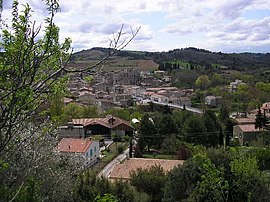Saint-Hilaire,_Aude
Saint-Hilaire (French pronunciation: [sɛ̃.t‿ilɛʁ] ⓘ; Occitan: Sant Ilari) is a commune in the Aude department in the Occitanie region in southern France.
You can help expand this article with text translated from the corresponding article in French. (December 2008) Click [show] for important translation instructions.
|




